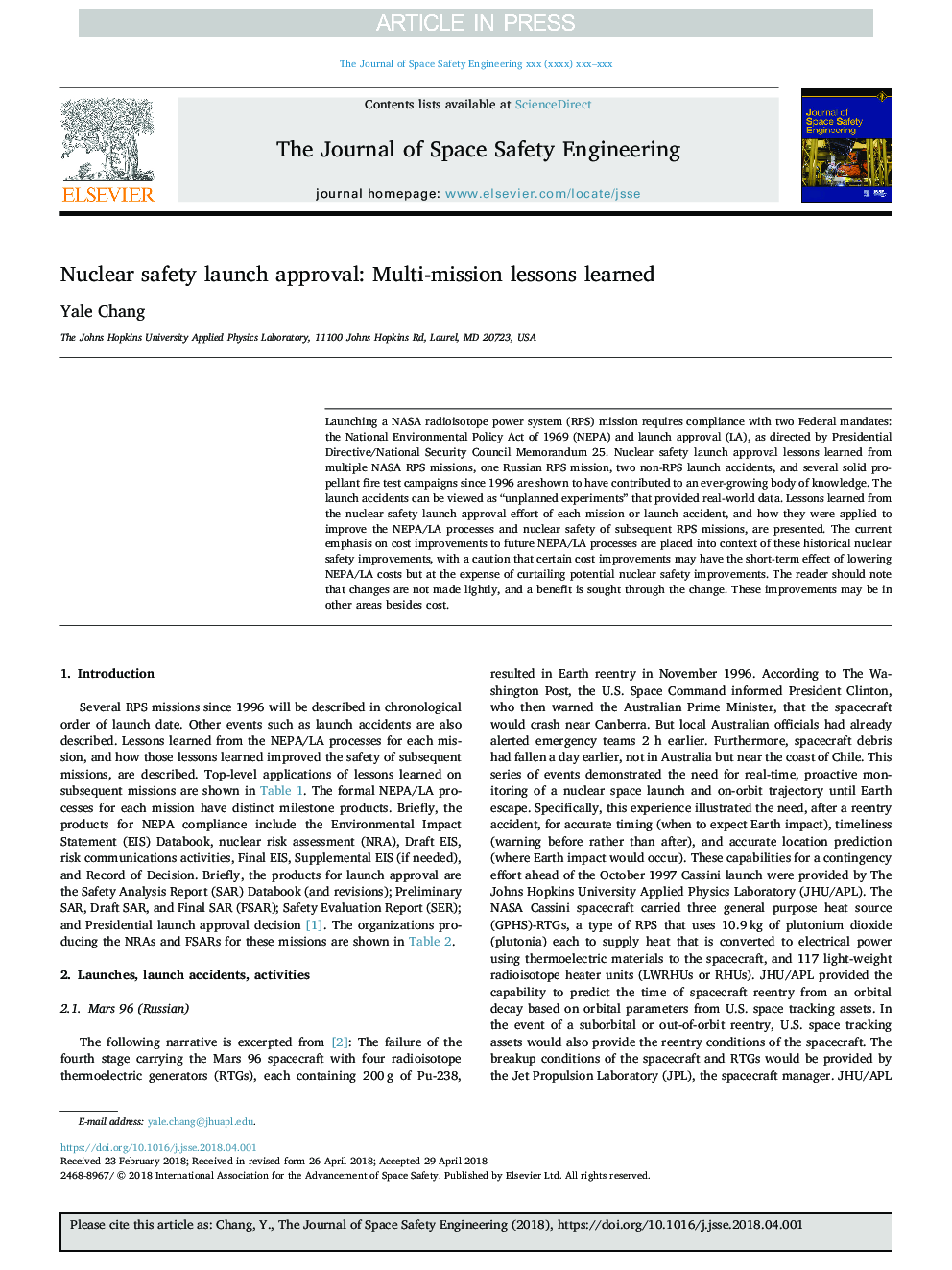| Article ID | Journal | Published Year | Pages | File Type |
|---|---|---|---|---|
| 8918349 | Journal of Space Safety Engineering | 2018 | 5 Pages |
Abstract
Launching a NASA radioisotope power system (RPS) mission requires compliance with two Federal mandates: the National Environmental Policy Act of 1969 (NEPA) and launch approval (LA), as directed by Presidential Directive/National Security Council Memorandum 25. Nuclear safety launch approval lessons learned from multiple NASA RPS missions, one Russian RPS mission, two non-RPS launch accidents, and several solid propellant fire test campaigns since 1996 are shown to have contributed to an ever-growing body of knowledge. The launch accidents can be viewed as “unplanned experiments” that provided real-world data. Lessons learned from the nuclear safety launch approval effort of each mission or launch accident, and how they were applied to improve the NEPA/LA processes and nuclear safety of subsequent RPS missions, are presented. The current emphasis on cost improvements to future NEPA/LA processes are placed into context of these historical nuclear safety improvements, with a caution that certain cost improvements may have the short-term effect of lowering NEPA/LA costs but at the expense of curtailing potential nuclear safety improvements. The reader should note that changes are not made lightly, and a benefit is sought through the change. These improvements may be in other areas besides cost.
Related Topics
Physical Sciences and Engineering
Earth and Planetary Sciences
Space and Planetary Science
Authors
Yale Chang,
